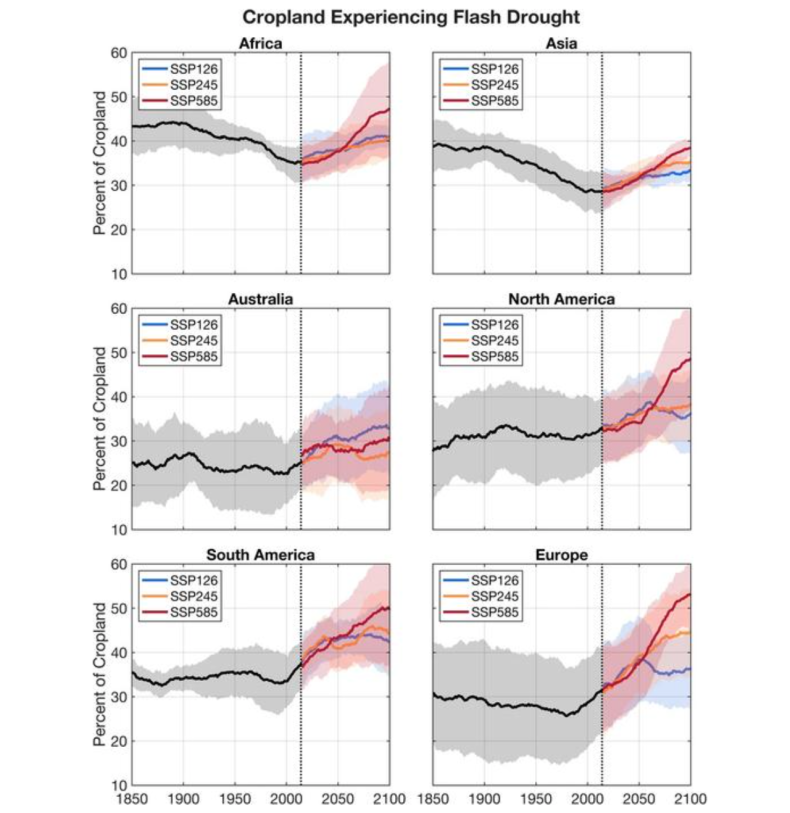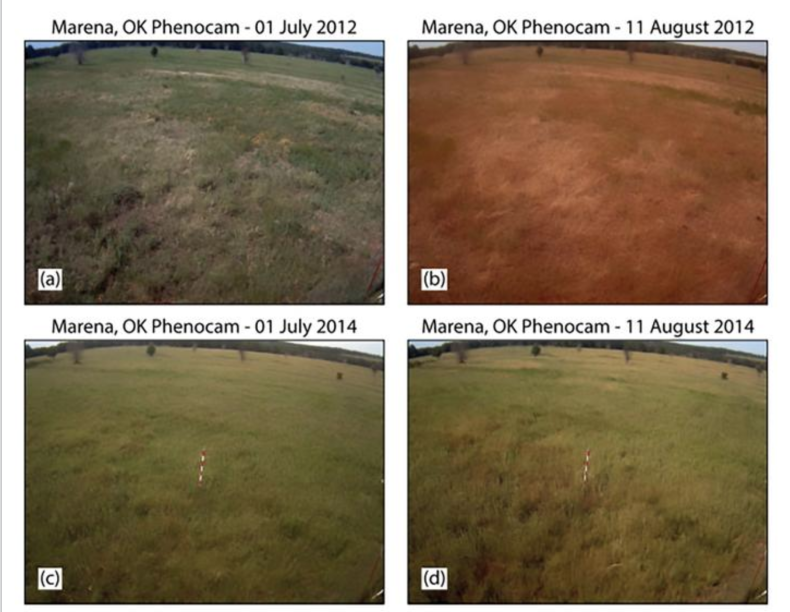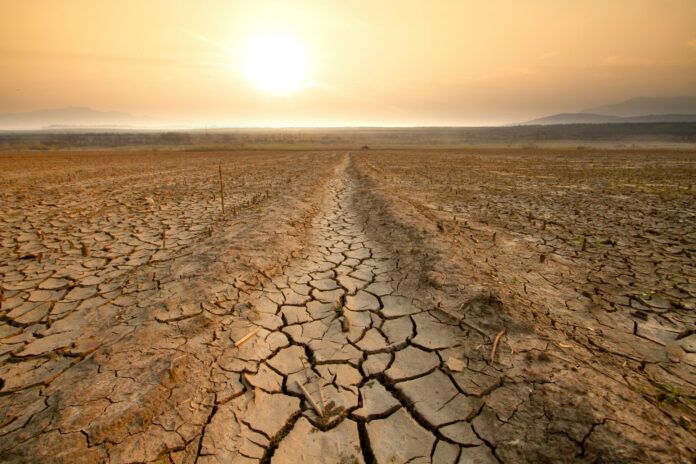Rapid-onset drought conditions are increasingly occurring around the world due to climate change.
The risks of these “flash droughts” are skyrocketing, fueled by carbon emissions, according to a paper published in the journal Nature Communications Earth and Environment. These droughts can severely affect agricultural and ecological ecosystems, scorching croplands and wiping out critical habitats.
“Flash drought risk over cropland is expected to increase globally, with the largest increases projected across North America (change in annual risk from 32 percent in 2015 to 49 percent in 2100) and Europe (32 percent to 53 percent) in the most extreme emissions scenario,” the authors of the paper wrote.
ISTOCK / GETTY IMAGES PLUS
Flash droughts are rapidly occurring droughts that can occur with little warning, unlike slowly-evolving droughts, according to NOAA’s National Integrated Drought Information System. Usually, drought is caused by low rainfall, while flash droughts are driven by the additional factor of extremely high temperatures, higher winds and changes in radiation from the sun causing excessive evaporation of moisture from the soil.
Flash droughts may impact food security across the globe, since croplands may be severely impacted.
“Flash drought risk over cropland is expected to increase globally, with the largest increases projected across North America and Europe,” Jordan Christian, a postdoctoral researcher of meteorology at the University of Oklahoma, and the lead author of the study, said in a statement.

Communications Earth & Environment: Global projections of flash drought show increased risk in a warming climate
This is a pressing issue considering that the world’s population is still on the rise. As the paper notes, the global population is expected to continue to rise to 9.7 billion people in 2050 and 10.4 billion in 2100. Demand for the agriculture industry is expected to double by 2050 as a result.
The study found that this is a direct result of the warming climate, heavily driven by carbon emissions.
“Under future climate change, not only will croplands be at greater risk for drought but croplands will also be more susceptible to a higher frequency of flash drought,” the paper says. “In the twenty-first century, considerable cropland expansion and intensification is expected regardless of the socioeconomic pathway, especially in Africa and South America. As such, the total cropland area projected to experience flash drought also rises throughout the future period.”
Global temperatures are forecast to increase by between 2 and 9.7 degrees Fahrenheit by 2100.

Image provided by the University of Oklahoma
The authors also found that the world has reached a point of no return: these flash droughts will increase in frequency no matter what we do, but increased carbon emissions will only serve to worsen their impact.
“We find that flash drought occurrence is expected to increase globally among all scenarios, with the sharpest increases seen in scenarios with higher radiative forcing [where more radiation enters Earth’s atmosphere than leaves it] and greater fossil fuel usage,” Christian said.
Climate change is expected to wreak havoc across many other facets of the environment, leading to increasing frequencies and severities of hurricanes and other storms, more wildfires and more intense flooding in the occurrence of heavy rainfall.
“This study continues to emphasize that agricultural producers, both domestic and abroad, will face increasing risks associated with water availability due to the rapid development of drought,” Jeffrey Basara, an associate professor in the School of Meteorology in the College of Atmospheric and Geographic Sciences and the School of Civil Engineering and Environmental Sciences in the Gallogly College of Engineering, and co-author of the study, said in the statement.
“As a result, socioeconomic pressures associated with food production, including higher prices and social unrest, will also increase when crop losses occur due to flash drought,” he said.
The authors say in the paper that in the future, more research is needed to study the precise drivers of flash droughts and how to handle them.
“Further, local-scale impacts and mitigation strategies for flash drought necessitate additional investigation based on the projected changes in flash drought occurrence within the context of global warming,” they wrote.
Do you have a tip on a science story that Newsweek should be covering? Do you have a question about droughts? Let us know via [email protected].


